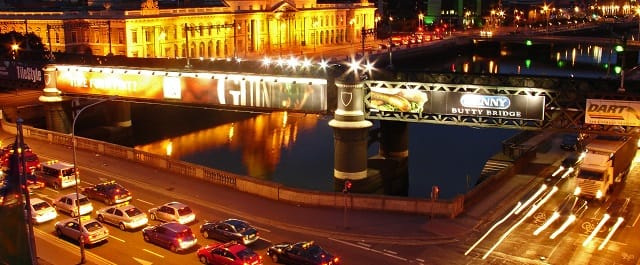Dublin taps into real-time data to ease traffic congestion

Officials in Dublin are hoping to solve the Irish city’s traffic problems by making smarter use of data.
Using systems built with the help of IBM, the city is now streaming in masses of data from multiple sources to build a digital map of traffic, especially the location of public buses, in real time.
This stream of “big data” — from bus timetables, closed-circuit television cameras, traffic detectors and GPS devices on board 1,000 city buses — is being used build a digital, real-time map of which vehicles are where on Dublin’s roadways. Coupled with improved reporting procedures, this information is designed to help city officials find the best ways to reduce transport congestion.
“Until recently we had a fragmented view of the overall health and real-time status of Dublin’s transport network, making it very difficult to identify traffic congestion in its early stages because the causes of a delay had often moved on,” said Brendan O’Brien, head of technical services for the city’s Roads and Traffic Department. “As a result of the research collaboration we now have a better idea of how multiple data can be merged from across different sources … ”
By watching traffic data in real time, for example, city officials have discovered that, during rush hour, some buses were being passed by other buses that had left the same spot at a later time. Working with IBM researchers, the city is now trying to pinpoint why “headways” — the distance or time between buses — are crossing like this, and what can be done to fix the problem.
Dublin is home to IBM’s first Smarter Cities Technology Center, established in 2010 with the goal of helping cities around the world better understand and manage systems like transport, water, communication and energy.
“Constantly in motion, cities generate enormous amounts of data that can help officials deliver a better quality of life for … citizens and build competitive advantage with the right tools,” said Francesco Calabrese, an IBM “Smarter Urban Dynamics” researcher in Dublin. “Dublin is becoming a smarter city by harnessing Big Data, extracting actionable insights from its transport data and delivering these instantly to decision makers so they can improve traffic flow and awareness of how to prepare for their future transportation need.”
Next month, Dublin is also scheduled to host the ninth ITS (Intelligent Transport Systems) Congress. Attendees at the gathering are expected to discuss such issues as how cloud computing can help with transport planning and how intelligent transport systems can help cut fuel use and carbon emissions.




